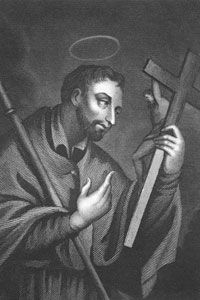Missionaries in the Age of Exploration
Beginning late 15th century, Catholic Spanish and Portuguese monarchs commissioned voyages to colonize the new lands and asked missionaries to come along. When Vasco Da Gama arrived in India in 1498, sure enough, a missionary was with him. Later, Jesuit missionaries would become especially influential in India.
Francis Xavier was a Jesuit missionary who was chosen to go to India at the behest of the Portuguese king. He arrived in 1542 and soon learned the local languages. Xavier was then able to preach to the people in their native tongue as well as translate the Apostle's Creed and the catechism into their language. In less than 20 years, Jesuits had baptized thousands of Indians [source: Mullin]. Xavier also traveled to other parts of Asia. In 1549, he came to Japan and found friends among influential political leaders. Within a few years, thousands of Japanese converted, and Nagasaki became a successful center of Christian missionary work in Japan. However, in the early 17th century, Christianity was outlawed and foreign missionaries were forced out [source: Mullin].
Advertisement
Robert de' Nobili, another important Jesuit missionary in India, did more than learn the local languages -- he enveloped himself into the culture. After adopting Indian garb and a vegetarian diet, he attempted to convert Hindus who adhered to the caste system and were hesitant to adopt Christianity. In a series of controversial compromises, de' Nobili encouraged converts by allowing social divisions within worship.
Jesuit missionaries also ventured into China and saw fleeting success. Jesuit Matteo Ricci adopted Chinese culture and clothing and attempted to assimilate Christianity into the local tradition. However, the Vatican ultimately disapproved of his choice to allow Confucian ceremonies that honor ancestors, and the Jesuits lost influence in China afterward.
Early Spanish and Portuguese dominance in the Americas allowed Franciscan, Dominican and Jesuit missionaries to prosper there, too. Such missionaries taught natives Catholicism along with farming techniques and other trades in addition to building hospitals and schools [source: Duiker]. They established dioceses and performed large-scale baptisms.
However, a social divide pervaded, and Native Americans weren't allowed to become Christian priests for more than a century. The native population suffered under harsh treatment from civil leaders. Some historians criticize the Christian church for not speaking out against this treatment and blame missionary activity for making natives more vulnerable to such abuses.
